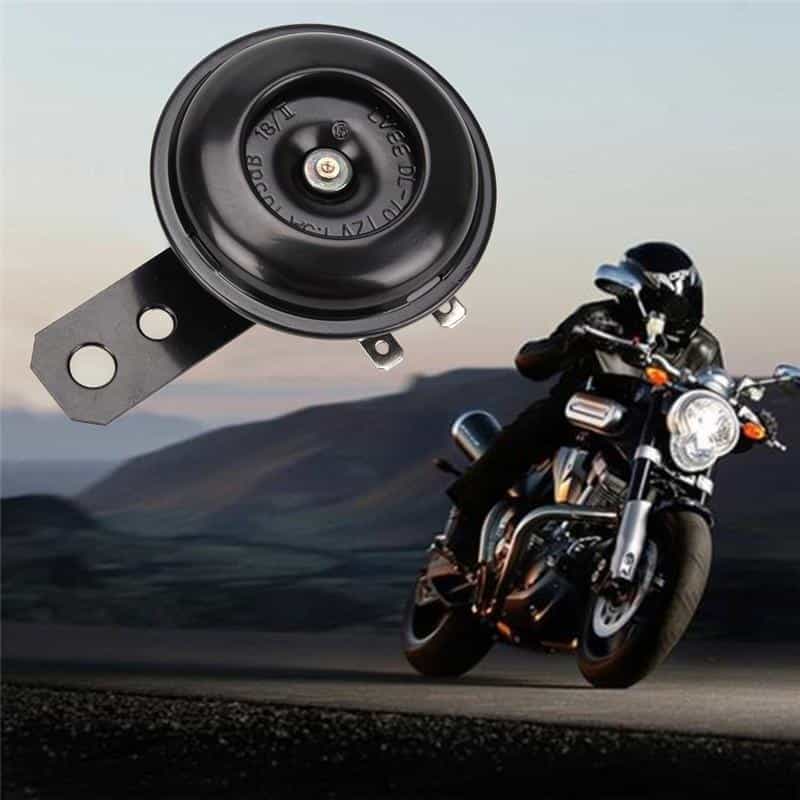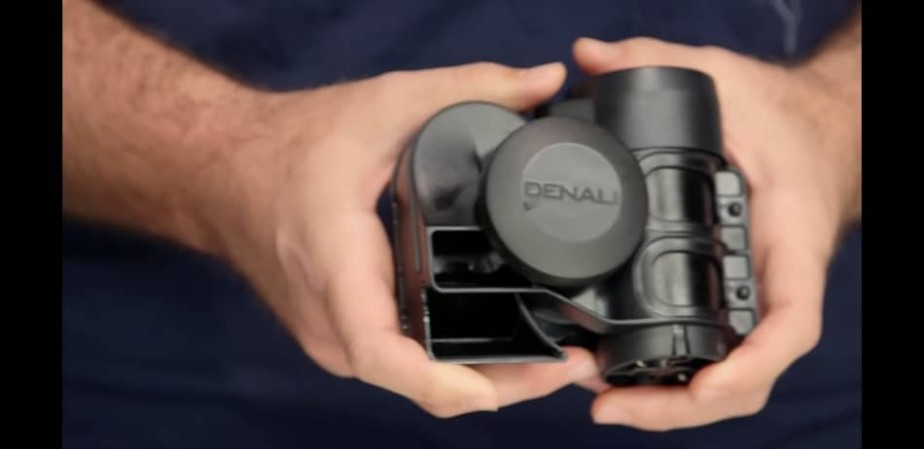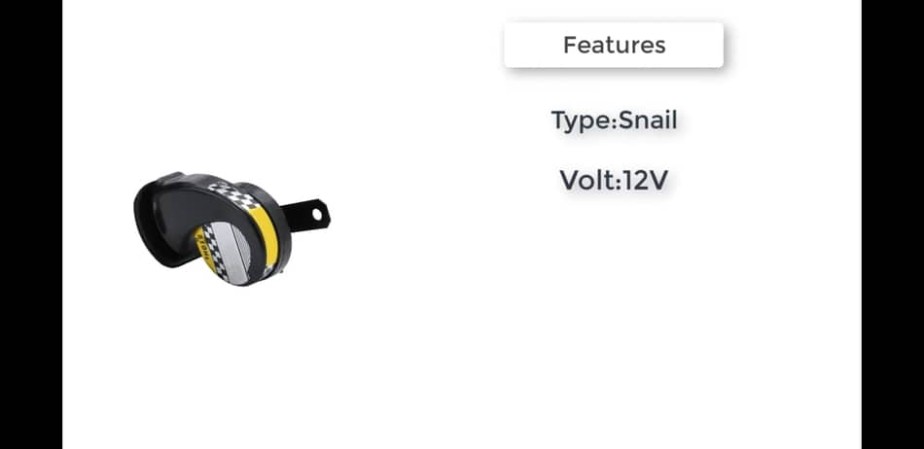
Has it ever happened to you that you wanted to beep during the ride to greet someone you know, or signal any specific traffic situation to other traffic participants like warn them of possible danger on the road, or to beep someone who doesn’t move on the green traffic light because he is to busy with surfing on the mobile phone.
If the answer is yes, you realize how significant a motorcycle horn is. Now imagine that your horn wasn’t working and you couldn’t use it. It wouldn’t present much of a problem in situations like greeting others.
Still, it could make a lot of difference in cases like not being able to signal vehicle in front of you that the traffic light turned green (if the person in front of you is too busy with his mobile phone), or situations like signaling other traffic participants that there is some danger on the road.
That’s why you need to take care of your motorcycle horn as well as the other motorcycle parts. You need to know what to do in case that your horn malfunctions and is there possible to fix it or you need to replace it.
So how to fix a motorcycle horn? Take the horn off the motorcycle and test it on a battery. Replace the contact point if it has signs of corrosion or dirt or if it is worn out. Disassemble the horn and clean its inside of any signs of oxidization. Reassemble the horn and put it back on the motorcycle.
Further in this article, you will learn step-by-step guidelines on repairing the horn and a lot more on what types of horns can be installed on your motorcycle, as well as how do they work. So stay with us and learn a lot of interesting and useful stuff.
Table of Contents
Repairing The Motorcycle Horn
Step 1- Take the Horn off, and Adjust the Horn

The motorcycle horn is pretty easy to adjust. Look for the adjustment bolt (nut), which is most of the time placed in the center of the diaphragm or on the back of the horn. This adapts the distance among the inner contact points that may be affected by corrosion, dirt, or simply wear out as time passes.
Step 2- Test the Horn
Connect the horn to the battery and readjust the gap until it beeps normally. If the horn doesn’t beep, you will have to disassemble it.
Step 3- Disassemble the Horn

You need to unscrew all the screws or rivets or split any folded steel ring on the outer edge. Make sure to write down or mark in which order you took the pieces so you know how to reassemble them back.
Step 4- Clean the Horn
Be cautious, and don’t fold the diaphragm! Clean the inside carefully and see if there are any signs of oxidization on the contact points. Use sandpaper if needed and carefully brush the contacts.
Step 5- Reassembling the Horn

Reassemble the horn in reverse order and test the horn.
Troubleshooting Your Motorcycle Horn
Horn problems are easy to determine. Look for the horn fuse and start with it if your horn has one. Blown fuses indicate wiring issues, so if you determine any, take a look and see if there are any damaged insulation, frayed connections, or any other signs pointing to electrical issues.
Take off the horn and connect it to a fully charged battery. Test the horn itself and see if it beeps. If it doesn’t beep, follow the repair guide below as we will help you fix it more in detail.
If the horn was working when you took it off the motorcycle and connected it to the fully charged battery, but it wasn’t working when it was installed on your bike, the problem has something to do with wiring, malfunction button (supposing you have looked the fuse) or a dead horn relay (if your bike has one).
How to Adjust and Repair Motorcycle Horns?
Many riders decide to throw their broken horns and don’t even bother to fix the old ones; instead, they find buying a new one a much easier solution than dealing with the old broken ones. You can buy a generic horn for around 10$-20$ and a model integrated with a louder blast for 20$-70$.
With that being said, why would someone bother with repairing or adjusting horns on their own? The answer to that is pretty simple.
Sometimes all it takes is a little adjustment to solve the problem. Another reason that may motivate you to fix it on your own is the hard time finding the perfect replacement if you own a vintage or antique motorcycle. The last reason mainly refers to the riders that enjoy motorcycle mechanics who want to learn how motorcycle parts work.
How Motorcycle Horns Work?
In the early beginnings, motorcycle horns were the same as bicycle horns which meant that they weren’t so loud and noticeable because the motorcycle engine itself was very loud.
1. Diaphragm Horns

Nowadays, diaphragm horns are the most common option since they are the smallest and cheapest choice on the market. You can find them on almost all types of motorcycles, from heavy tourers to scooters, usually placed in the front part of the bike. Inside of these horns consists of a steel diaphragm placed above a small electromagnet.
When the horn button on the steering wheel is pressed, it activates the electromagnet, which then pulls the diaphragm on as long as a group of contact points touch, breaking down the pull of the electromagnet on the steel and bringing back the diaphragm to its original process to begin the cycle again.
If you have ever fixed or serviced a motorcycle fuel pump, you have most likely seen the exact concept of electromagnet, points, and diaphragm work. The diaphragm vibrates between those two positions, creating a steady tone. It is very effective, compact, and straightforward.
2. Snail Horns

There is a type of the basic diaphragm horn, sometimes called snail horns, that has a curled trumpet over the diaphragm. They cost a little more, and the trumpet helps project and direct the sound. Bear in mind that you turn down the trumpet opening while installing it so the water doesn’t collect inside.
3. Airhorns

Airhorns are the baddest and biggest motorcycle horns powered by small compressors. This type of horn is ideal if the drivers ignore you, and replacing a stock horn with this one will surely make a lot of difference. The horn and compressor can be combined into a single unit, and some manufacturers do so. At the same time, some divide these two parts to get more flexibility when installing them on the motorcycle.
TIP: An extra relay is almost always needed for air horns because they require increased amperage.
Two Horns Are Better Than One
Most motorcycles have only one horn, while cars have two horn setups. This is why the motorcycle horn is very weak and not so noisy compared to other traffic participants. Two horn setups can be found mostly on cruisers and tourers.
A two-horn beep is much easier to hear because it produces a louder sound, so manufacturers choose two horn setup over one horn setup. If your motorcycle has one horn installed, you can add another one if you feel that only one doesn’t produce enough sound, and if doing so, use a relay to protect stock wiring since the amperage can pass the stock wiring harness.
You can find dual horn kits on the market or upgrade your motorcycle horn using replacements such as Wolo, Stebel, Denali, or similar brands.

Here is a video that can help you with your horn repair:
Conclusion
The motorcycle horn is undoubtedly a very important piece of motorcycle equipment. It is used for many different situations like the ones in which we want to warn other traffic participants of some kind of danger on the road. In that case, it can save someone’s life and prevent them from getting hurt. It can also help in speeding (or making it run normally) the traffic if there is someone stopped at the red traffic light and using his mobile phone and not noticing that the light turned green, in which case we can use a horn to signal the driver to go.
We hope you have enjoyed reading our article about motorcycle horns and learned something new while also learning how to fix or replace your horn if you ever need it. These are the basics that have helped many of our rider friends, and we hope they will help you as well.
